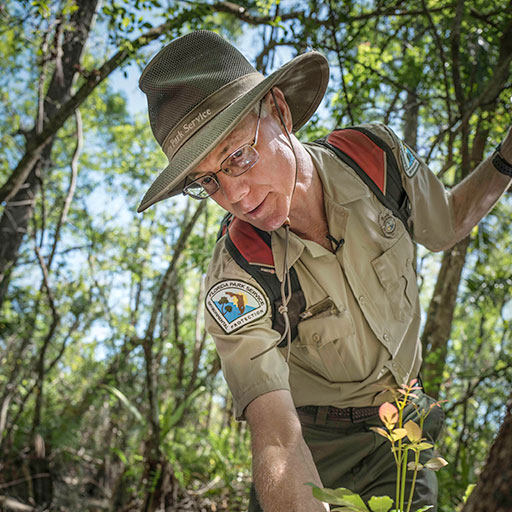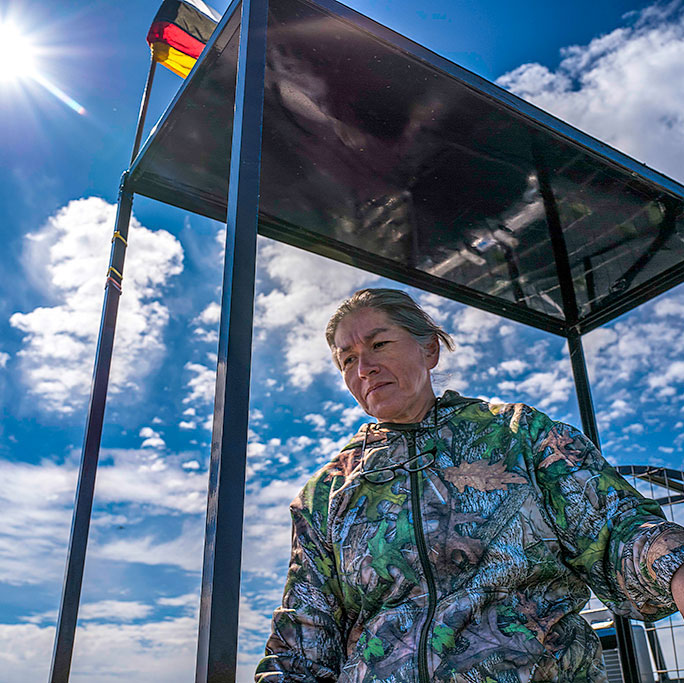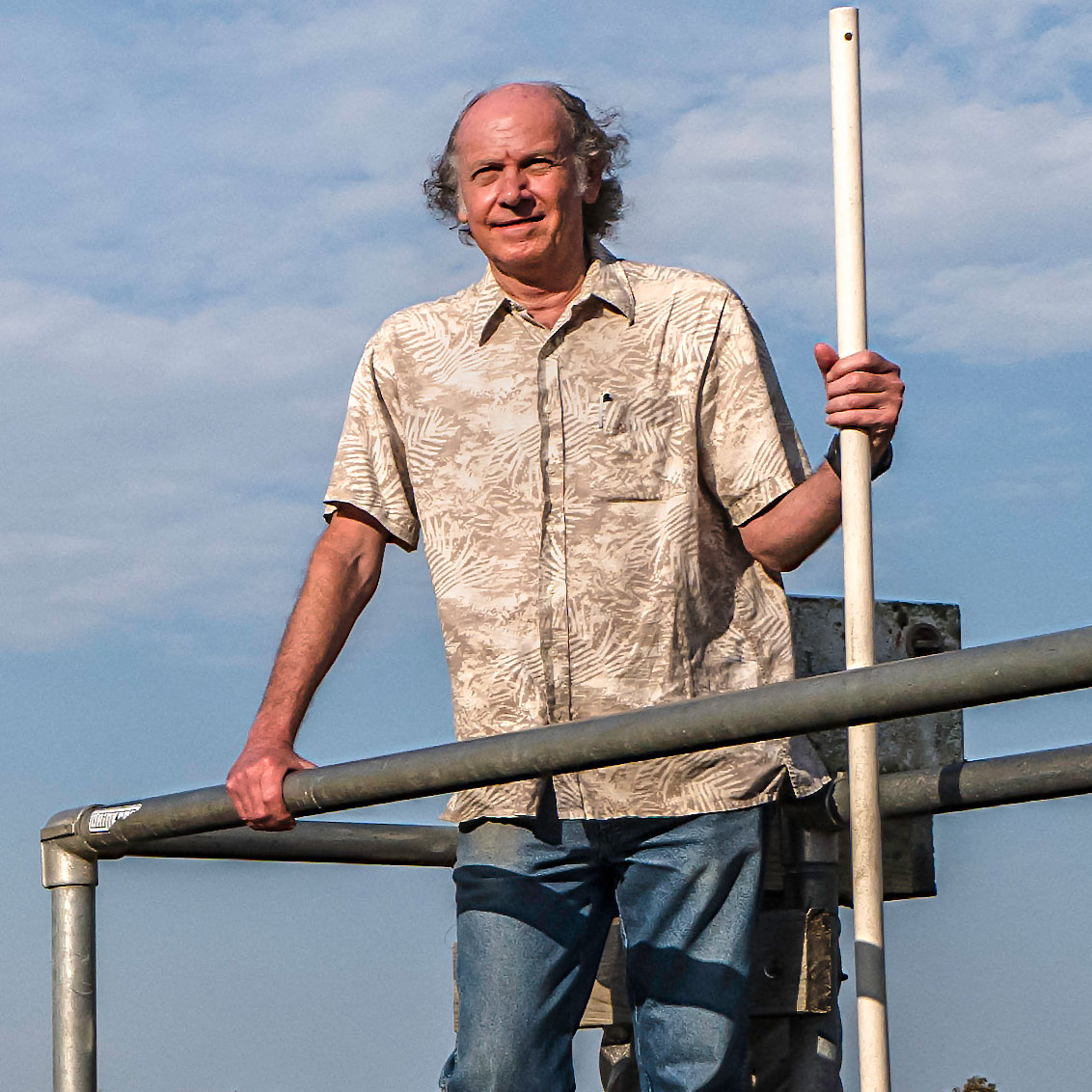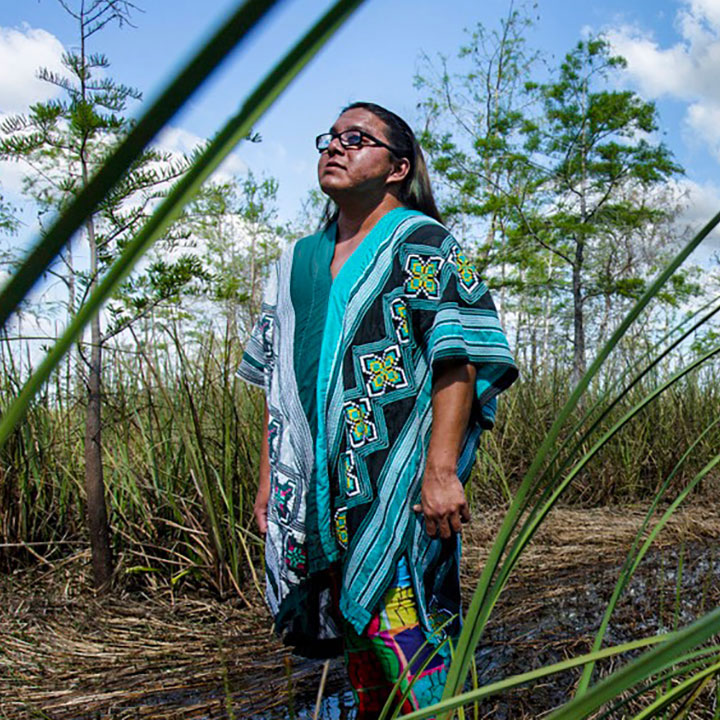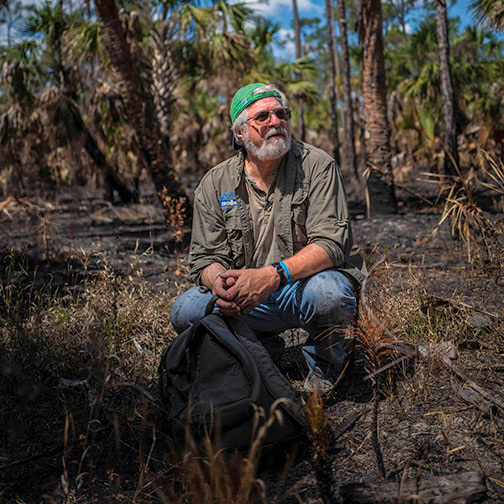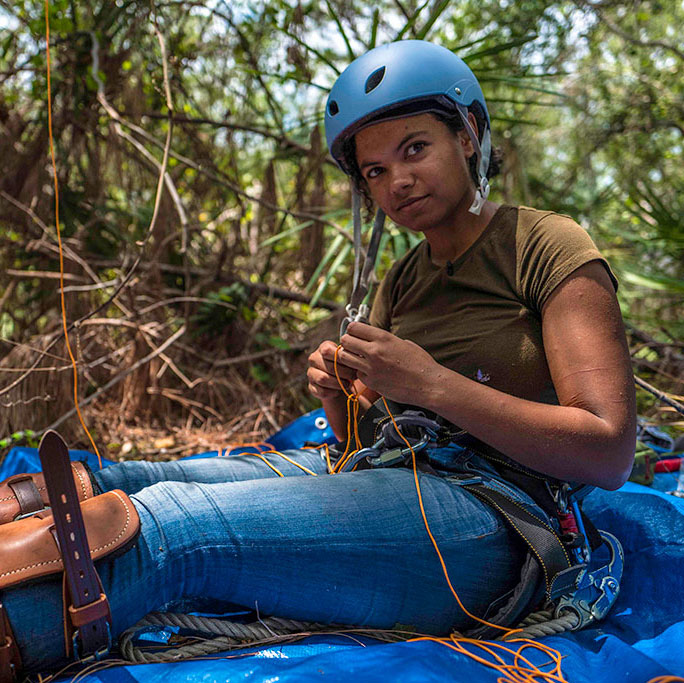
Fakahatchee
Mike Owen is a biologist at the Fakahatchee Strand Preserve State Park, the orchid capital of the United States. The Fakahatchee Strand, a forested wetland, is the largest strand swamp in the world. The Everglades itself is 5000 years old. Mike takes us on an exclusive swamp walk to find a ghost orchid and explains how biodiversity is vital to our survival. Use the icons on the right to further explore this place.
Mike Owen is a biologist at the Fakahatchee Strand Preserve State Park, the orchid capital of the United States. The Fakahatchee Strand, a forested wetland, is the largest strand swamp in the world. The Everglades itself is 5000 years old. Mike takes us on an exclusive swamp walk to find a ghost orchid and explains how biodiversity is vital to our survival. Use the icons on the right to further explore this place.

River of Grass
Betty Osceola, a member of the Miccosukee tribe and an airboat tour operator, has made it her mission to protect the water of the Everglades. Betty takes us to see how the pollution plume in the cypress swamps is literally suffocating the natural growth of the once pristine region. The majority of Florida's prairies have been converted to cattle ranches, sod farms, and citrus groves. These prairies are no longer the thriving grasslands they once were. Use the icons on the right to further explore this place.
Betty Osceola, a member of the Miccosukee tribe and an airboat tour operator, has made it her mission to protect the water of the Everglades. Betty takes us to see how the pollution plume in the cypress swamps is literally suffocating the natural growth of the once pristine region. The majority of Florida's prairies have been converted to cattle ranches, sod farms, and citrus groves. These prairies are no longer the thriving grasslands they once were. Use the icons on the right to further explore this place.

Poison Water
Larry Brand, an algae specialist, explains how fertilizer runoff causes algae blooms that pose frightening but largely invisible health risks. We follow Larry on his water sampling route which begins at a canal on the edge of the Everglades and ends in the mangroves of Florida Bay. Mangroves are able to withstand harsh conditions make them a natural buffer and stabilizing force against storms. Use the icons on the right to further explore this place.
Larry Brand, an algae specialist, explains how fertilizer runoff causes algae blooms that pose frightening but largely invisible health risks. We follow Larry on his water sampling route which begins at a canal on the edge of the Everglades and ends in the mangroves of Florida Bay. Mangroves are able to withstand harsh conditions make them a natural buffer and stabilizing force against storms. Use the icons on the right to further explore this place.

Tree Island
Reverend Houston R. Cypress, a Miccosukee artist and the co-founder of "Love the Everglades Movement," explains the vital role of water and tradition in the Everglades. Houston takes us to a tree island in the heart of the Everglades. Tree Islands are elevated tree-covered mounds and some scientists suggest these were once ancient trash mounds or shell middens, which accounts for the height. The number of Tree islands in the Everglades has been shrinking. Use the icons on the right to further explore this place.
Reverend Houston R. Cypress, a Miccosukee artist and the co-founder of "Love the Everglades Movement," explains the vital role of water and tradition in the Everglades. Houston takes us to a tree island in the heart of the Everglades. Tree Islands are elevated tree-covered mounds and some scientists suggest these were once ancient trash mounds or shell middens, which accounts for the height. The number of Tree islands in the Everglades has been shrinking. Use the icons on the right to further explore this place.

Dr. Disturbance
Win Everham, a disturbance ecologist, takes us to a recently burned pine forest to explain the impacts of human caused disturbances. The pinelands of Florida are rugged landscapes that depend on both wild and human caused fires, to clear out the large pines that would otherwise be blocking light to the seedlings. Use the icons on the right to further explore this place.
Win Everham, a disturbance ecologist, takes us to a recently burned pine forest to explain the impacts of human caused disturbances. The pinelands of Florida are rugged landscapes that depend on both wild and human caused fires, to clear out the large pines that would otherwise be blocking light to the seedlings. Use the icons on the right to further explore this place.

City Swamp
Donna Molfetto, a raptor biologist, takes us to what was once a thriving hardwood hammock but is now struggling as a result of encroaching development. Hardwood Hammocks are dominated by tropical mahogany, gumbo-limbo, and an undergrowth of ferns and air plants. These unique ecosystems have been impacted by human development, fires, agriculture, and alterations in water flow. Donna explains the importance of tracking red shouldered hawks to see if this species will be able to survive the impacts of human expansion. Use the icons on the right to further explore this place.
Donna Molfetto, a raptor biologist, takes us to what was once a thriving hardwood hammock but is now struggling as a result of encroaching development. Hardwood Hammocks are dominated by tropical mahogany, gumbo-limbo, and an undergrowth of ferns and air plants. These unique ecosystems have been impacted by human development, fires, agriculture, and alterations in water flow. Donna explains the importance of tracking red shouldered hawks to see if this species will be able to survive the impacts of human expansion. Use the icons on the right to further explore this place.
